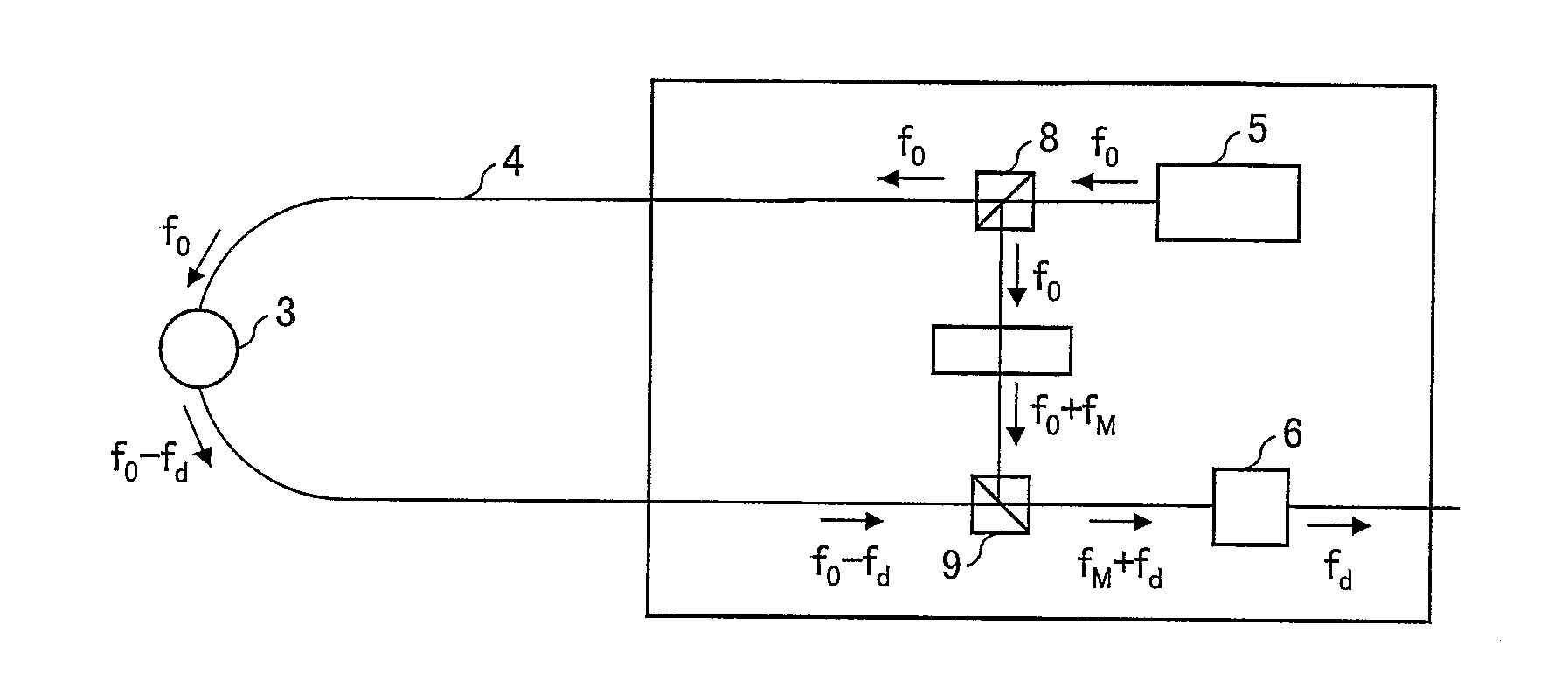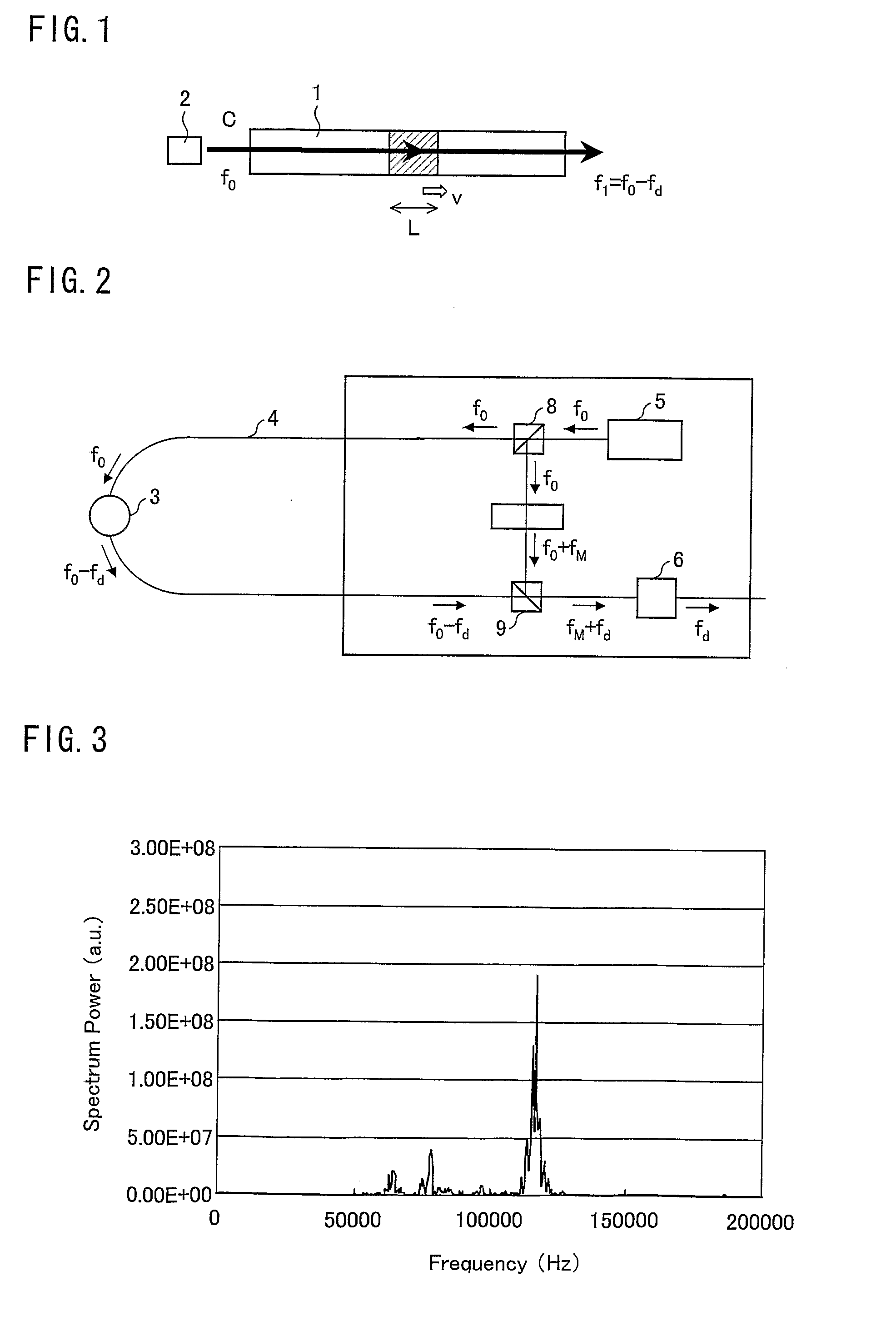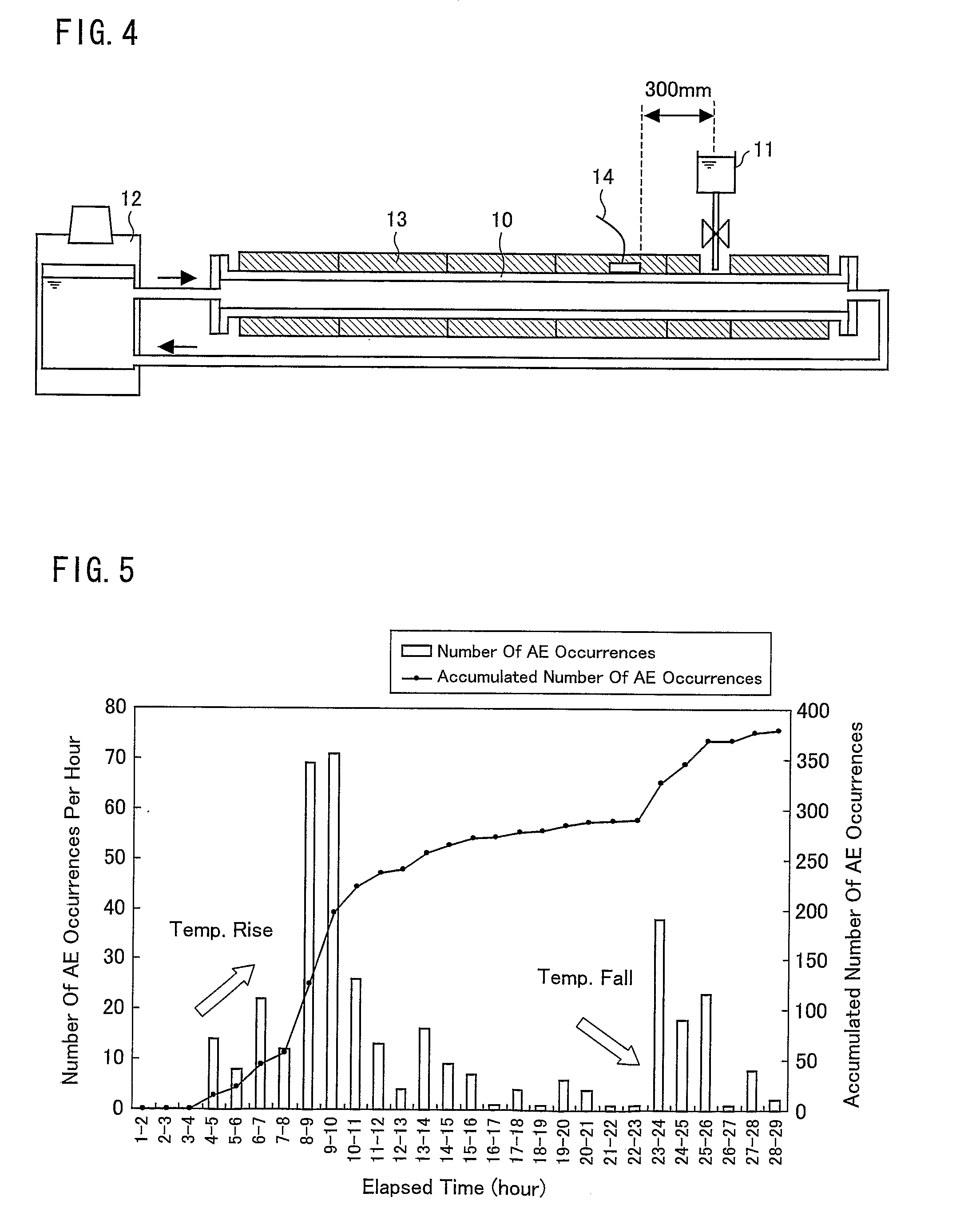Inspection method for inspecting corrosion under insulation
a technology of inspection method and corrosion under insulation, which is applied in the direction of measurement devices, instruments, scientific instruments, etc., can solve the problems of requiring enormous man-hours, huge cost, and finding corrosion in two or three pipes per 1000, so as to achieve efficient, convenient, and economical inspection of corrosion under insulation
- Summary
- Abstract
- Description
- Claims
- Application Information
AI Technical Summary
Benefits of technology
Problems solved by technology
Method used
Image
Examples
example 1
Evaluation on AE Detection in Early Stage of the Corrosion
[0055](1. Preparation of Mock-Up Piping)
[0056]In order to evaluate the CUI detection methods using a FOD sensor, a mock-up piping as illustrated in FIG. 4 was prepared firstly.
[0057]A heat insulator 13 was attached to a pipe 10 made of carbon steel in 5 m in length. Silicone oil heated by a heating device 12 was circulated through the pipe 10. Corrosion was artificially accelerated in order to cause CUI efficiently. More specifically, the corrosion was produced as follows. Pure water was continuously dropped from a dropping device 11 to a surface of the pipe 10 in such a dropping amount that was finely adjusted to repeatedly produce a wet state and a dry state (i.e., to produce so-called “nuregawaki” state in Japanese) on the piping 10. In addition to this water dropping, dietary salt was applied to the surface of the pipe 10. Further, the silicone oil circulating through the pipe 10 was heated in a range of 60° C. to 70° C.,...
example 2
Evaluation on Detectable Distance for AE
[0063](1. Preparation of Mock-Up Piping)
[0064]In a mock-up piping prepared in the same manner as in Example 1, corrosion was artificially produced and accelerated in the same manner as in Example 1.
[0065](2. Evaluation on AE Detection)
[0066]AE detection was evaluated in the same manner as in Example 1, except that the evaluation was carried out on the mock-up piping in the middle stage of the corrosion about 3 months later from the start of the artificial acceleration of the corrosion, and that FOD sensors were firmly attached, by using U-bolts, to a pipe section of the mock-up piping respectively in distances of 2000 mm, 3000 mm, and 3900 mm from the corroded portion (where the pure water was dropped on). Here, it was evaluated whether and how effectively the AE detection could be performed with the FOD sensors so distanced from the corroded portion.
[0067]FIG. 6 illustrates the result of the AE detection of the FOD sensor attached in the dist...
example 3
Comparison Between Pipe Section and Flange Section for AE Detection
[0069](1. Preparation of Mock-Up Piping)
[0070]In a mock-up piping prepared in the same manner as in Example 1, corrosion was artificially produced and accelerated in the same manner as in Example 1.
[0071](2. Evaluation on AE Detection)
[0072]AE detections was evaluated in the same manner as in Example 1, except that the evaluation was carried out on the mock-up piping in the late stage of the corrosion about 5 months later from the start of the artificial acceleration of the corrosion, and that the FOD sensors were attached respectively to a pipe section in the distance of 3900 mm from the corroded portion (where the pure water was dropped on) and to a flange section in the distance of 3950 mm from the corroded portion. The result of the AE detection at the pipe section was compared with the result of the AE detection at the flange section. The FOD sensor attached to the pipe section was firmly attached thereto by usi...
PUM
| Property | Measurement | Unit |
|---|---|---|
| frequencies | aaaaa | aaaaa |
| length | aaaaa | aaaaa |
| temperature | aaaaa | aaaaa |
Abstract
Description
Claims
Application Information
 Login to View More
Login to View More - R&D
- Intellectual Property
- Life Sciences
- Materials
- Tech Scout
- Unparalleled Data Quality
- Higher Quality Content
- 60% Fewer Hallucinations
Browse by: Latest US Patents, China's latest patents, Technical Efficacy Thesaurus, Application Domain, Technology Topic, Popular Technical Reports.
© 2025 PatSnap. All rights reserved.Legal|Privacy policy|Modern Slavery Act Transparency Statement|Sitemap|About US| Contact US: help@patsnap.com



